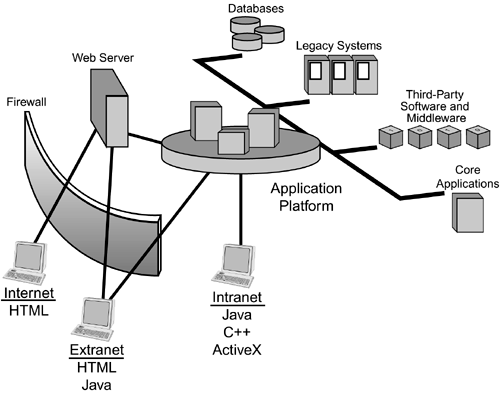Application Hosting
| Calling application servers "middleware" is a bit ingenuous, to say the least. However, because that is the way they are generally classified, it would be confusing for us to buck the trend. As we discussed in an earlier chapter, an application server is any product that provides a host for application logic and processes all (or part) of an application. For example, interface logic can be defined by using client-side development tools, with all server-side business-logic processes using a remote application server. The benefit of this scenario is that both application logic and access to resources can be shared through a centralized entity (see Figure 8.4). Figure 8.4. Typical Java-enabled application server architecture.
Application servers control access to these environments by using "units of work," or transactions. A transactional paradigm enables them to recover from system- and resource-level problems and to scale to high user and processing loads. To accomplish this, application servers use mechanisms such as multiplexing database requests. However, every product implements these features in unique ways and so should be explored carefully before being used. These environments include IDEs, which help the developer create the logic for the application server, using an easy-on-the-eyes graphical user interface. They may also provide client-side tools or client-side development features through a partner. |
EAN: 2147483647
Pages: 220
